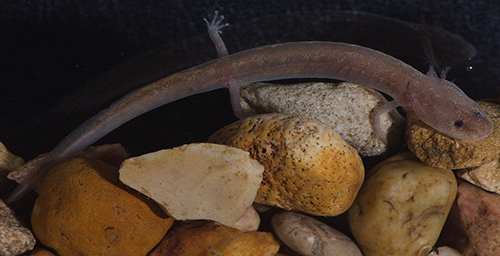Many recent college graduates find themselves struggling with the impending doom of beginning a career path. Where does one look and where do the opportunities for careers lie? TxDOT answers these searching questions with varied career paths and options that may surprise many.
While TxDOT offers careers in the obvious departments, such as maintenance, construction and engineering, they also offer an array of the unexpected; graduates and long-time workers alike can find job listings like videographer, archaeologist and even librarian within TxDOT.
At TxDOT's Waco District, Michael Rhodes holds the job title of environmental specialist. Rhodes said he heard of the unexpected job category after his father, a retired Dallas District maintenance worker, told him he should apply. At the time, Rhodes had recently graduated with a degree in wildlife management from Texas A&M University. He has now worked for TxDOT for almost 24 years.

Rhodes says the path to a career for a college student can be difficult, and finding a path directly related to your degree can be a winding one. "It's not as clear-cut when you're a student," says Rhodes. But he also says that there are ways to use your knowledge and expertise in ways you wouldn't expect. "I'll never forget, I had a professor at A&M that told us, ‘Only 20 percent of you will get a job in your field,'" Rhodes says. "My job doesn't just focus on wildlife management, but a lot of what I do every day concerns my degree."
So, what exactly does an environmental specialist do? TxDOT has environmental specialists at each district and in the Environmental Affairs Division in Austin. Their specialties include archaeology, historic properties, hazardous materials natural resources and air quality and noise analysis. Rhodes—and his fellow environmental specialist in Waco, David Jayroe—mainly conduct field work such as investigation/evaluation and obtaining required permits, monitoring Texas' endangered species, and evaluating the impact each construction/maintenance project will have on surrounding wildlife habitats. They receive support and expertise from ENV when needed, especially in the fields of archaeology and historic properties.
"I would say 95 percent of the work we do for TxDOT happens before the construction projects have even begun," Rhodes says.
The National Environmental Policy Act (NEPA), carried out by the United States Environmental Protection Agency, directs much of the efforts of TxDOT's Environmental Affairs division. NEPA requires agencies like TxDOT that use federal funds to assess the environmental effects of their proposed actions prior to making decisions. This requirement includes providing opportunities for public review and comment on their evaluations.
In addition to his effort to protect wildlife and habitat, Rhodes works closely with the public. He and his colleagues arrange and facilitate public meetings and hearings, where the public can give their input on the projects and their ideas for conserving the environment around them.
"We present the projects to the public and do our best to incorporate their ideas whenever possible," Rhodes says. "Public involvement is a large part of our work."
Since NEPA also requires that agencies look closely at how their actions will affect the surrounding environment and habitats, Waco District's environmental specialists must observe Central Texas' wildlife and plan for mitigating any expected negative impacts on it before construction begins. For instance, springtime means flowers and showers for most of us, but it also means something entirely different for the Waco TxDOT environmentalists. Cliff Swallows are among the birds protected by the Migratory Bird Treaty Act, and they tend to nest this time of year on the many bridges along I-35. NEPA requirements mean that contractors and project managers have to be mindful of the nests before any demolition is done on bridges in the area, or they can be hit with a $15,000 fine per damaged nest from the United States Fish and Wildlife Service.
"Every year we send out reminders to take care of those nests," Rhodes says. "In extreme cases, we've even had to collect the nestlings and send them off for rehabilitation elsewhere before demolition can begin."

Rhodes takes very seriously the task of trying to protect Central Texas' other endangered and rare species from the potential complications of major construction projects. Birds like the Golden-cheeked Warbler and the Black-capped Vireo are on the endangered species list, as are insects like the Tooth Cave spider and the Tooth Cave ground beetle.
Rhodes recently worked with the Salado Creek Salamander, indigenous only to (you guessed it!) Salado Creek. When highway construction plans ran directly through Salado Creek, environmentalists feared they would threaten the salamander habitat.
"Our job was to work with consultant designers and our Bridge Division to put special notes in the plan in order to try and prevent erosion and damage to the springs," Rhodes says. Not only were the plans specialized to fit the needs of the rare species, but some of the Salado Creek Salamanders collected during field surveys were sent to the Dallas Zoo, which operates a breeding program.
Besides working in an environment and a field that he loves, Rhodes says the best part about working for TxDOT is continuing to learn long after receiving his college degree, and continuing to see something different all the time.
"TxDOT is great about providing ongoing training," Rhodes says. "This job offers so many varieties of interest; it's something new for us every day."
Jake Smith
I-35 Public Information Officer
254-867-2705
Contact My35